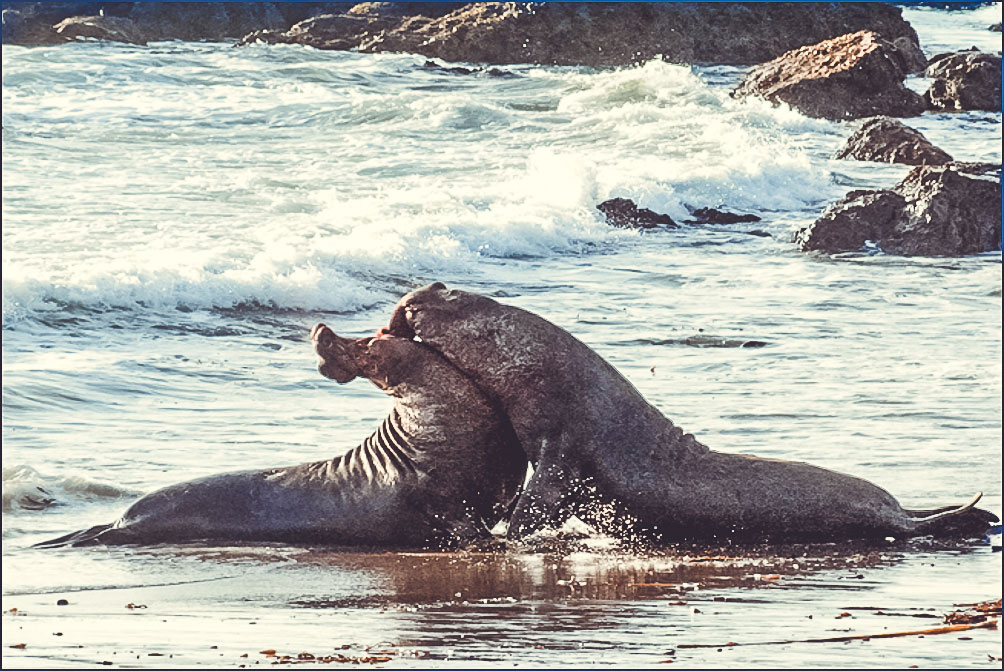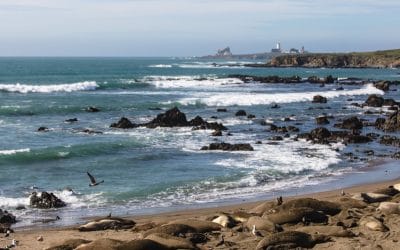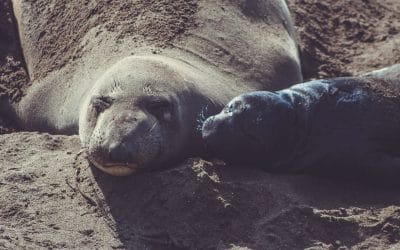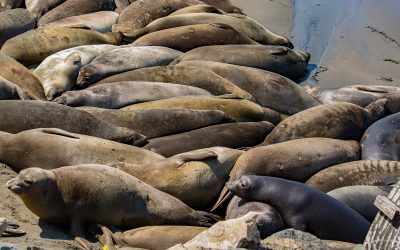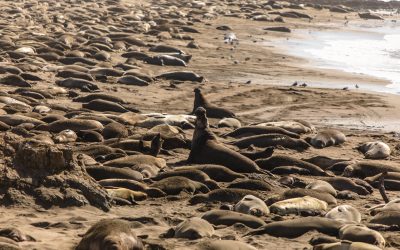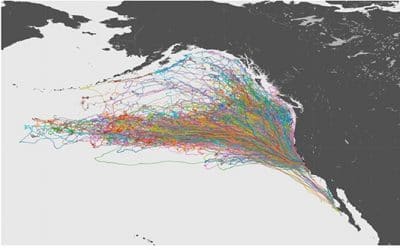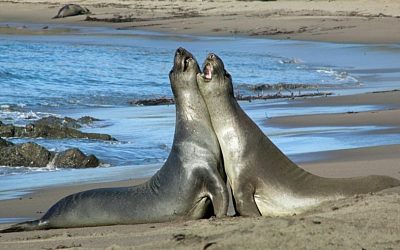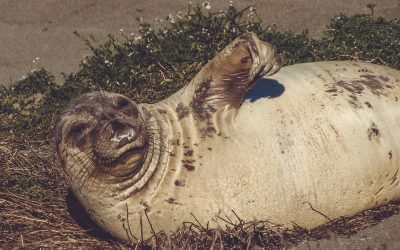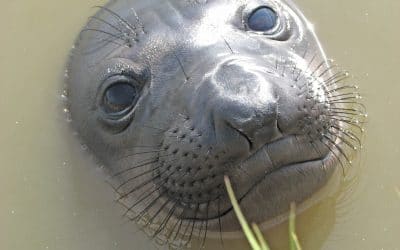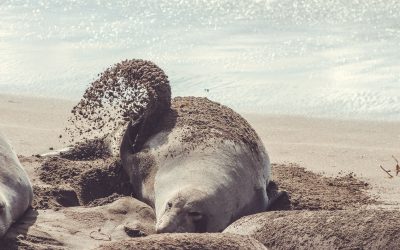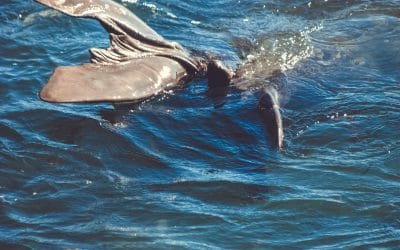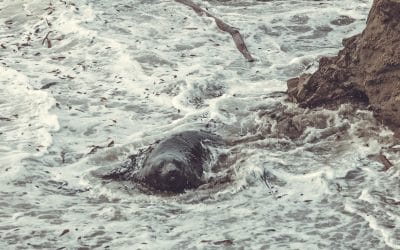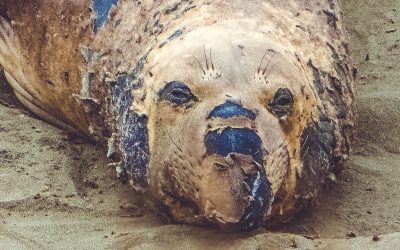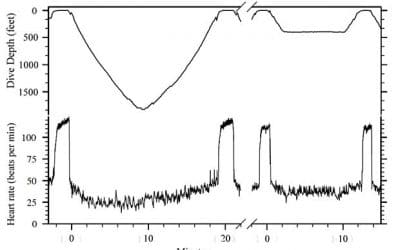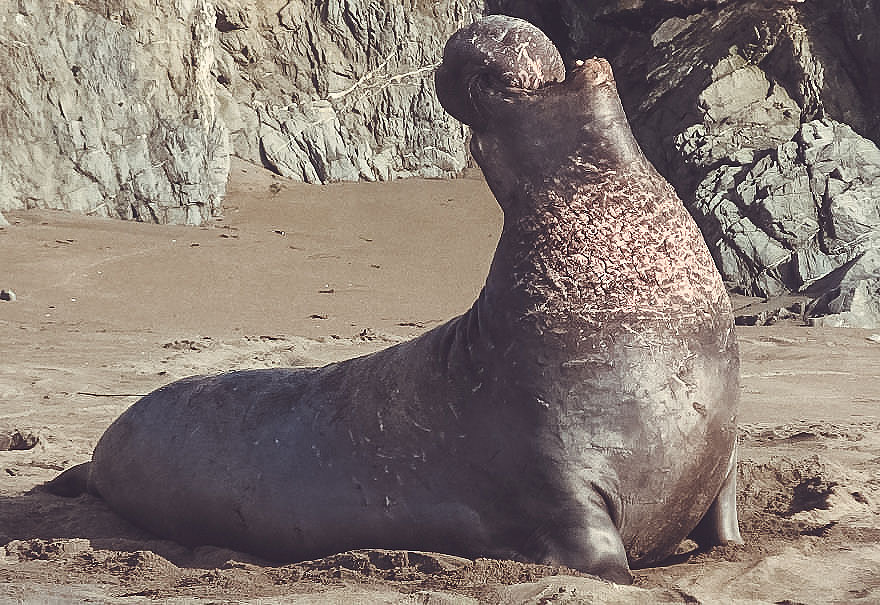About the Northern Elephant Seal
Northern elephant seals are well named because adult males have large noses that resemble an elephant’s trunk. Males begin developing this enlarged nose, or proboscis, when they reach puberty at about five years, and it is fully developed by eight to nine years. Adult males may grow to 14-16 feet (4-5 m) in length and weigh up to 5,000 pounds (2,300 kg). The females are much smaller at 9-12 feet (2.5-4 m) in length and 900-1,800 pounds (400-800 kg). The northern elephant seal is the second largest seal in the world, after the southern elephant seal. The elephant seal is in the phocid, or true seal, family. It lacks external ear flaps and moves on land by flopping on its belly. The elephant seal has a broad, round face with very large eyes. Pups are 3 to 4 feet (1 m) long at birth and weigh about 70 pounds (32 kg). They are born with a black coat which is molted, or shed, at about the time of weaning (28 days), revealing a sleek, silver-gray coat. Within a year, the coat will turn silvery brown.
By the Numbers
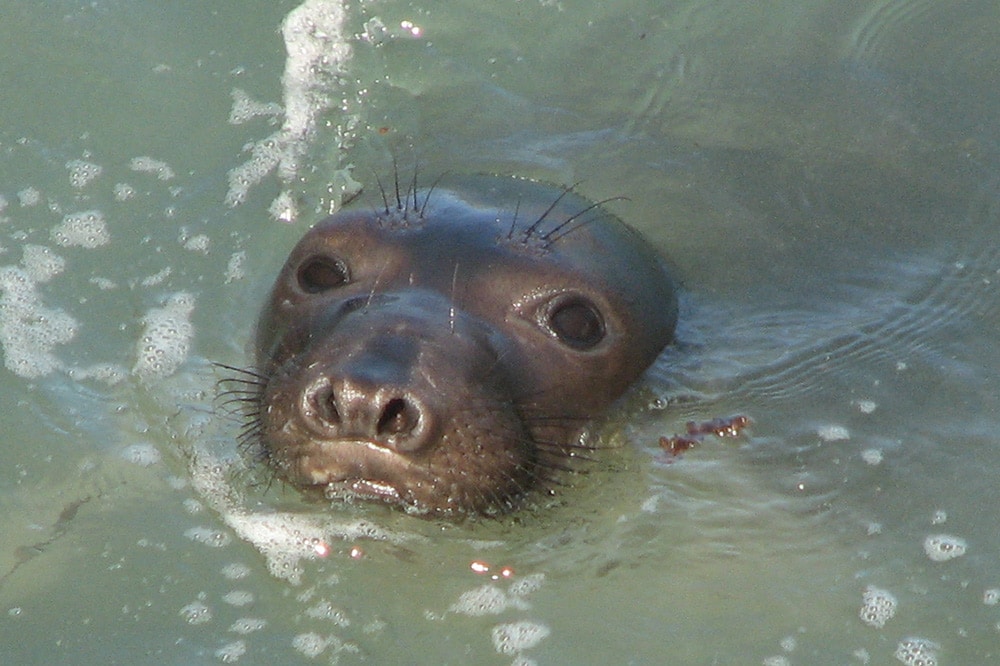
Elephant Seal Vital Statistics
Diving: The average dive depth of an elephant seal is 1,000 to 3,000 feet (300 - 900 meters) with a maximum depth of over 5,000 feet (1,500 meters). Read on below to learn more interesting facts about the elephant seals at each stage of their...
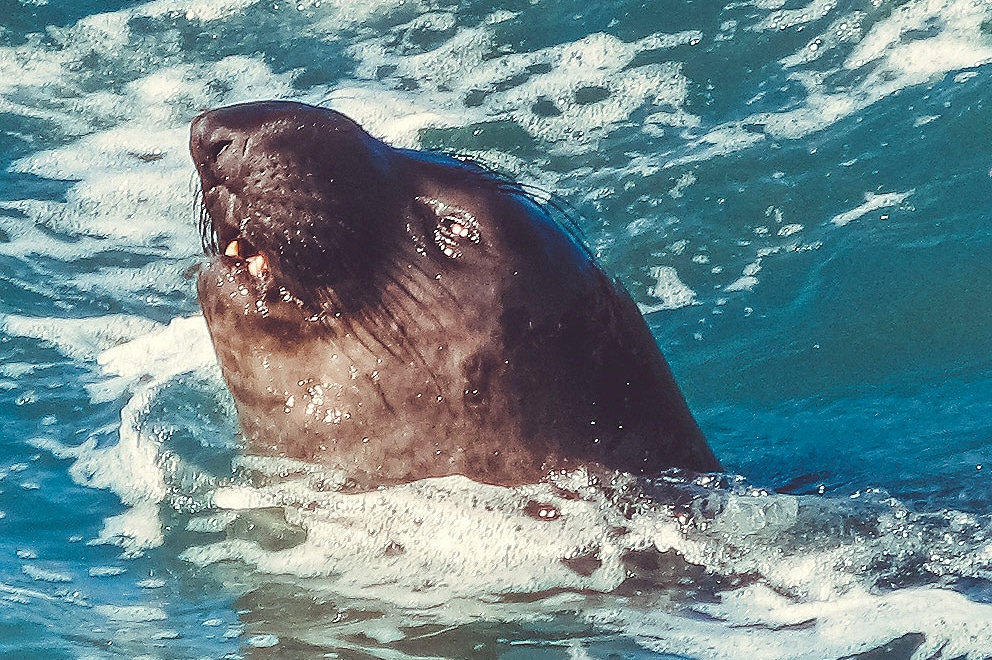
An Elephant Seal’s Deep Dive
An Elephant Seal's Deep Dive When diving to hunt, the northern elephant seal first exhales, emptying its lungs of almost all air. This reduces buoyancy and protects the seal from the bends (decompression sickness). All of the oxygen used to provide...
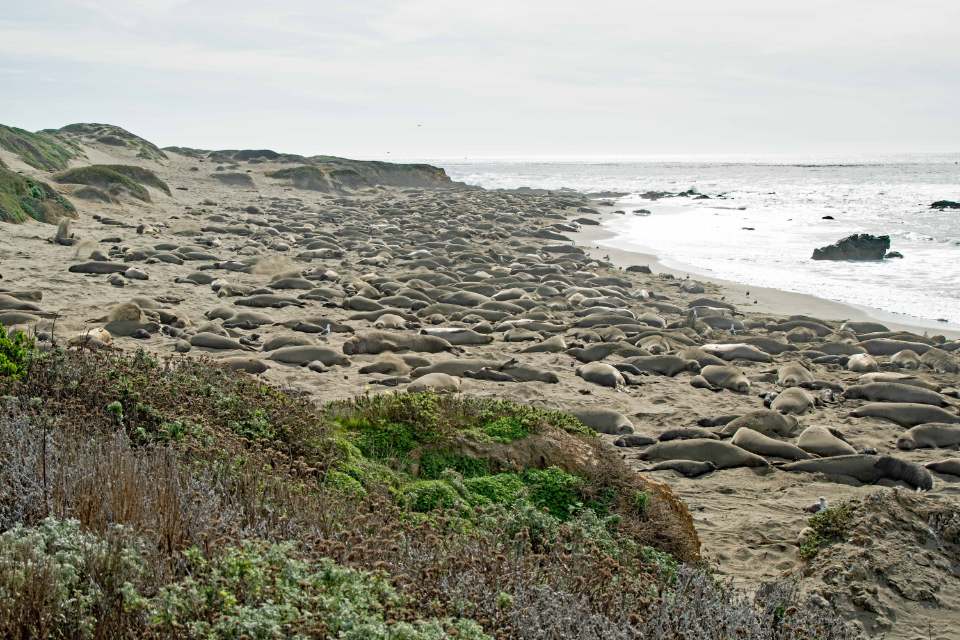
Where Do Elephant Seals Live?
Elephant seals live mostly at sea, spending 8-10 months of the year in the open ocean and they come ashore only twice a year. They are onshore in the winter for birthing and breeding, and in the late spring and early summer to shed their fur (molt) and grow their new...
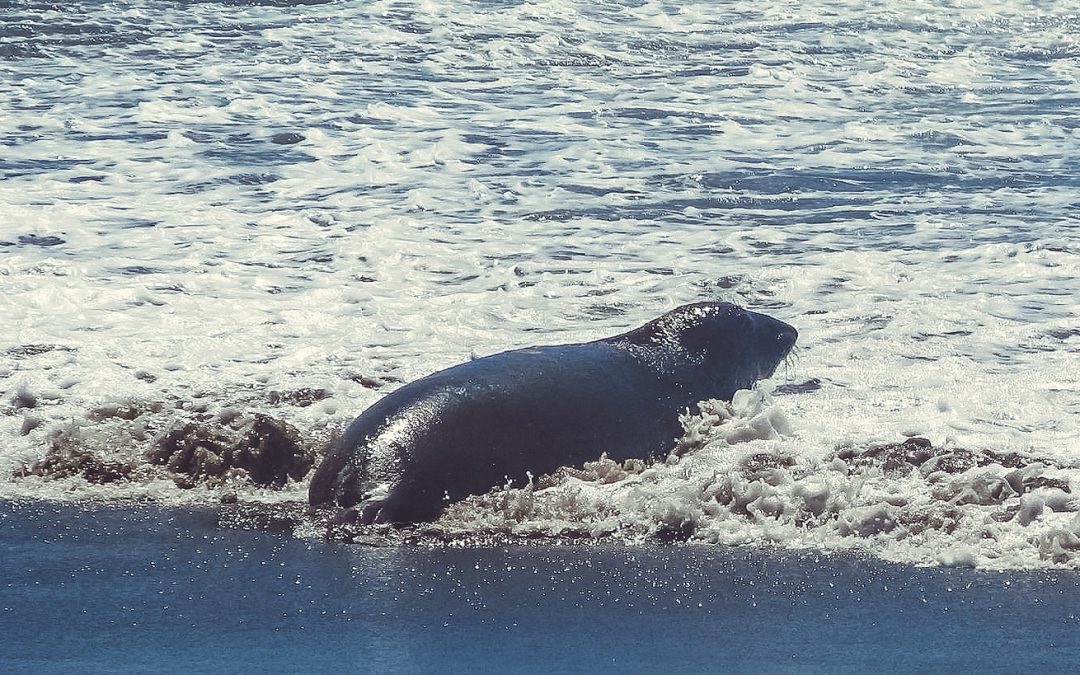
Where Do the Seals Go When They Aren’t at the Rookery?
The seals employ a grab and swallow technique of feeding, taking such prey as hake, dogfish, rays, octopus and crabs, generally from the ocean bottom. The danger from orcas is greater here than in mid-ocean depths, but the quantity and quality of food allow the adult...
On the Beach
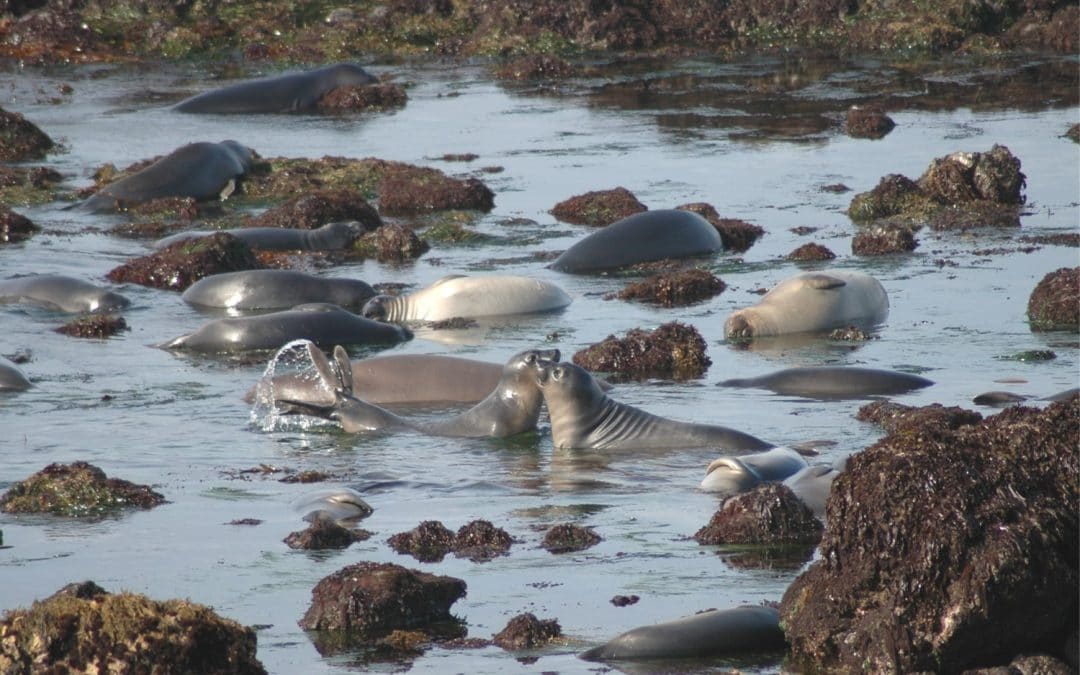
March
Adult males that arrived in December leave the beach. They have lost as much as 40% of their weight, after fasting for over three months. The older weanlings will begin to make their way to the...
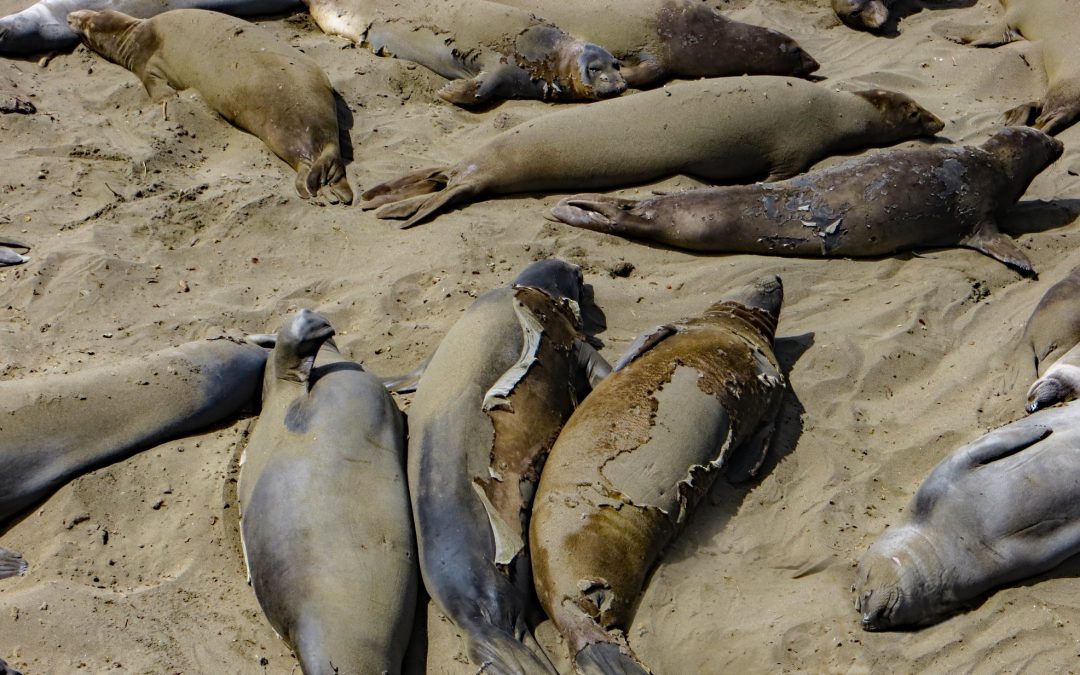
April – May
Adult females that left the rookery after weaning their pups, as well as juveniles that were out at sea all winter, begin arriving late in March. This is the start of the molting season. Growing new...
Elephant Seal Science
Where Can Elephant Seals Be Found?
Northern elephant seals are found in the North Pacific, along the coast of North America, from Baja California, Mexico to the Gulf of Alaska and Aleutian Islands. During the breeding...
Birthing and Breeding
Birthing and breeding season takes place December through March. Adult male seals (bulls) and large sub-adult male seals begin to arrive in late November, with most arriving in December....
Delayed Implantation
Shortly before a female leaves the rookery after birthing and nursing her pup, she will mate several times and become pregnant. She leaves the rookery for two to three months, returning in...
Fasting
Except for nursing pups, all of the seals in the rookery are fasting – no food and no water for their entire stay. They survive by metabolizing their blubber, providing energy,...
Sonification
A recent study produced some results and a presentation that is very interesting. Data on the tracking of 321 adult female seals were used to produce a “chorus” that captured some...
Age Classes
Northern elephant seals can be categorized into multiple classes based on their age and gender. Females mature earlier than males and reach adulthood several years before males do. Pup =...
Making Energy from Blubber
Elephant seals have a thick layer of blubber that keeps them warm in the deep, cold sea. Blubber is fatty tissue found under the skin in all pinnipeds. Blubber is different from other...
Sensory Ability
Elephant seals forage at great depth where it is very dark, even during the day. While there is no evidence of any echolocation ability, foraging appears to depend upon vision and...
Thermoregulation
Seals control internal temperatures and reduce heat loss by a mechanism called countercurrent heat-exchange. As an example, the arteries carrying warm blood to the hind flippers...
Oxygen Capacity and Utilization
Oxygen is used by all mammals to support metabolism and is carried in three ways - as a component of air in the lungs, attached to hemoglobin in the red blood cells, or attached to...
Lifespan of an Elephant Seal
As with most wild animals, an elephant seal’s life is fraught with danger. As visitors to the rookery can see during the birthing season, a number of seal pups do not survive. High seas...
Molting
Beginning in late March and extending into September, each of the seals, with the exception of the weaned pups of that year, will return to the rookery for a month to grow new skin and...
The Dive Response
Like all seals, elephant seals undergo a set of physical changes when they dive – called the dive response. The dive response includes a significant drop in heart rate, constriction of...


